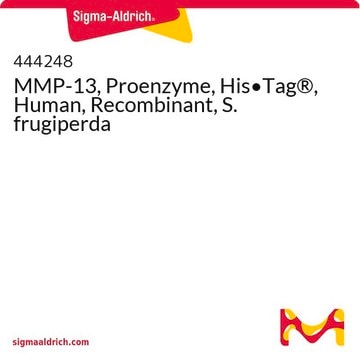408700
Poly(ethyleneimine) solution
average Mw 1800, 50 wt. % in H2O
Synonim(y):
Ethyleneimine polymer solution, PEI
About This Item
Polecane produkty
Postać
liquid
masa cząsteczkowa
average Mw 1800
stężenie
50 wt. % in H2O
współczynnik refrakcji
n20/D 1.453
gęstość
1.08 g/mL at 25 °C
InChI
1S/C2H8N2.C2H5N/c3-1-2-4;1-2-3-1/h1-4H2;3H,1-2H2
Klucz InChI
SFLOAOINZSFFAE-UHFFFAOYSA-N
Powiązane kategorie
Opis ogólny
Zastosowanie
It can be used as a precursor to prepare polyelectrolyte multilayers for the promotion of cell adhesion and growth on implant surfaces.
PEI can act as a reactive template and stabilizing agent in the preparation of metal nanoparticles in aqueous media. The amino groups in the PEI can coordinate with metal ions dissolved in water and reduce their aggregation capability. This results in the formation of smaller nanoparticles.
Cechy i korzyści
- It has repetitive structural units and aflexible polymer chain.
- Due to the accessibility of a huge number ofamino groups on PEI, it can be modified or functionalized for specific featuressuch as sensitivity, specificity, and biocompatibility.
- Highwater solubility.
Postać fizyczna
Hasło ostrzegawcze
Warning
Zwroty wskazujące rodzaj zagrożenia
Zwroty wskazujące środki ostrożności
Klasyfikacja zagrożeń
Aquatic Chronic 2 - Skin Sens. 1
Kod klasy składowania
10 - Combustible liquids
Klasa zagrożenia wodnego (WGK)
WGK 2
Certyfikaty analizy (CoA)
Poszukaj Certyfikaty analizy (CoA), wpisując numer partii/serii produktów. Numery serii i partii można znaleźć na etykiecie produktu po słowach „seria” lub „partia”.
Masz już ten produkt?
Dokumenty związane z niedawno zakupionymi produktami zostały zamieszczone w Bibliotece dokumentów.
Klienci oglądali również te produkty
Produkty
Gene therapy has become one of the most discussed techniques in biomedical research in recent years.
Terapia genowa stała się jedną z najczęściej dyskutowanych technik w badaniach biomedycznych w ostatnich latach.
We present an article that discusses two applications in particular; first, using these layers as polyelectrolyte membranes to control permeability.
Microfluidic assembly improves polyamine nanoencapsulation of nucleic acids, overcoming challenges like polydispersity and poor reproducibility.
Nasz zespół naukowców ma doświadczenie we wszystkich obszarach badań, w tym w naukach przyrodniczych, materiałoznawstwie, syntezie chemicznej, chromatografii, analityce i wielu innych dziedzinach.
Skontaktuj się z zespołem ds. pomocy technicznej










